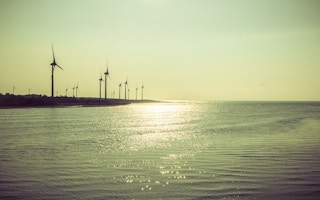Not long ago, the future of nuclear power was in Asia. In 2015, nine of the 10 reactors that opened globally were on the continent. But recent declarations by South Korea and Taiwan that they will “go green” have called into question nuclear power’s long-term viability, at least in East Asia.
To continue reading, subscribe to Eco‑Business.
There's something for everyone. We offer a range of subscription plans.
- Access our stories and receive our Insights Weekly newsletter with the free EB Member plan.
- Unlock unlimited access to our content and archive with EB Circle.
- Publish your content with EB Premium.
Indeed, 2017 may mark the end of the region’s nuclear love affair – and the start of a new one with renewables.
South Korean President Moon Jae-in and Taiwan’s President Tsai Ing-wen have both set ambitious national agendas to boost renewable energy generation while calling for a phase-out of nuclear. For years, overreliance on traditional fuels discouraged investment in clean technologies for power generation, despite the fact that both countries are innovators in green industries, like energy storage and smart grids.
Whereas 22 per cent of South Korea’s energy needs, and 14 per cent of Taiwan’s, are met by nuclear, those ratios are now set to drop dramatically.
Blueprints are still being formulated, but taken together the two countries’ commitments mark a major shift in regional energy planning toward greener, cleaner technologies. Moreover, they will pave the way for increased investment in renewable-power installations, placing their countries on a new competitive footing in the regional market.
South Korea’s strategy calls for a phased withdrawal from the nuclear industry, through non-renewal of existing licenses and bans on future plants. Last month, Moon, who was elected in May and campaigned on a nuclear-free agenda, called for an increase in the use of renewables, to 20 per cent of the country’s total power generation, by 2030, up from the current 5 per cent.
He has also pledged to close ten coal-fired power plants by the end of his term in 2022. Currently, coal accounts for about a quarter of the country’s energy consumption. Natural gas would be used as a “bridging fuel” during the transition to greener power.
Given that South Korea currently operates 25 nuclear reactors and had plans to build six more, the shelving of nuclear power is a significant shift in the country’s energy strategy. Indeed, some have expressed doubts about the feasibility of Moon’s plans.
There are also questions about how the energy-policy overhaul will affect the country’s lucrative export market for nuclear technology. But Moon remains resolute.
In Taiwan, Tsai is equally committed. Last year, responding to public opposition to nuclear energy in the wake of Japan’s 2011 Fukushima meltdown, Tsai vowed to make Taiwan nuclear-free by 2025. Today, coal and natural gas provide more than two thirds of the country’s electricity needs, with renewables accounting for 5 per cent.
Tsai has called for the share of renewables to increase to 20 per cent over the next eight years, with the capacity coming primarily from solar and offshore wind. This new load would easily replace the electricity generated by the country’s six nuclear reactors.
“
2017 may mark the end of (East Asia’s) nuclear love affair – and the start of a new one with renewables.
Critics contend that green technologies are not mature enough to replace traditional fuels for industrial-scale energy use. But these claims are a few years too late. Significant declines in start-up costs and energy-storage prices, as well as improved battery performance, have made renewables more competitive than ever.
As Francesco Starace, Chief Executive of Enel, Europe’s largest energy company by market capitalization, told the Financial Times in June, renewables are becoming the “cheapest and most convenient way of producing electricity.”
South Korea and Taiwan are not the first East Asian powers to go greener. China has been moving in that direction for years, and now leads the world in installed renewable-energy capacity. But by joining the renewables revolution, Taiwan and South Korea will make it easier for other regional players to enter the market, because expanded investment opportunities will increase competitiveness and further drive down already declining costs.
In fact, if there is one valid criticism of Moon’s and Tsai’s visionary goals, it is that they could be realized even faster. For example, if both leaders were to allow the purchase of renewable power from the planned Global Energy Interconnection or the Asian Super Grid, they could increase the share of green energy more rapidly.
South Korea and Taiwan have few natural resources of their own, and are heavily reliant on imported fuel to generate electricity. The introduction of competition to the national monopolies in both countries would also speed the shift to renewables.
But for now, what is most important is the precedent that South Korea and Taiwan are setting. The renewables market in East Asia is about to blossom. When it does, the region’s decades-old dependence on nuclear power will finally be broken.
Sung-Young Kim is a lecturer in international relations at Macquarie University in Sydney. John A. Mathews is a professor of management at the Macquarie Graduate School of Management in Sydney.
Copyright: Project Syndicate, 2017.
www.project-syndicate.org









